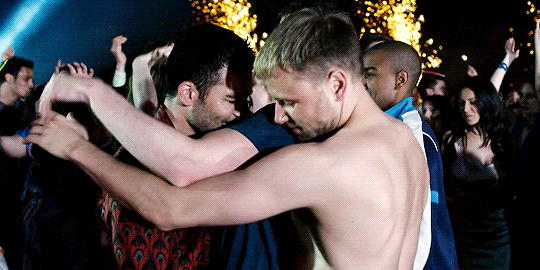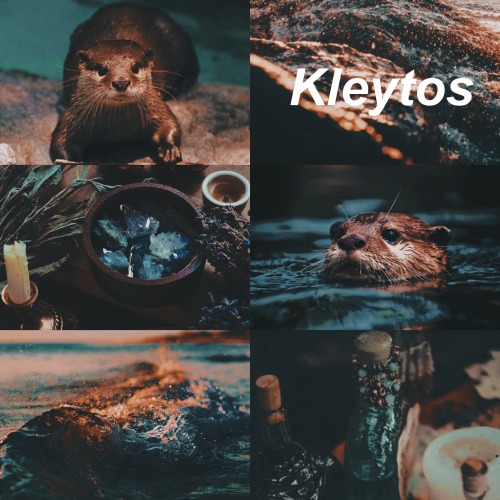Has Anybody Talked About Sense8 And Daemons Though?
Has anybody talked about Sense8 and Daemons though?
More Posts from Waterbxy and Others
Max has chemistry with everyone in this cast... What a trio. Gotta love Lito "we had sex" and "heeyy" Will evolution 🤣







Finally scanned all my Animorphs bookmarks.
Yup. My childhood.
Can I ask for a dæmon aesthetic for us? My dæmon's name is Kleytos, he's form is an euroasian otter and we love the sea and witchcraft🥺🥺
Thank you in advance

Here you go! Hope you like it! ✨✨
Me: *is on the phone to a relative*
Me: *sees Pan out of the corner of my eye*
Me: don’t do it..
Pan: 👀
Me: don’t. Do. It.
Pan:........
Me:
Pan: *starts wiggling violently and making me laugh*
*when we get off the call*
Me: but was that necessary though?
Pan: absolutely.
I absolutely love the concept of having a hdm!daemon but honestly? The one thing I can’t agree with is the taboo of daemon touching. It would simply be too much of a problem in society.
It would be extremely hard not to touch a daemon in areas where there are lots of people and little space. People bump into each other all the time on the street, in hallways, in trains and subways, etc. In Japan, people value personal a lot, and yet even there people squish together in trains or run into each other while crossing the street. If touching a daemon was the equivalent of rape, rape rates would go up drastically. Not to mention, big daemons would have an especially hard time because of all of the space they take up. What if you and your daemon have a big family but live in a small house? Even worse, what if all your family members have big daemons? You could argue that you could just move to a bigger house, but what if you can’t afford it?
Also, what happens if you trip or faint and accidentally touch a daemon? What if you and your daemon need to be carried to safety, but no daemon is big enough to carry yours away? What, you and them would just be left to die?
I think that if daemons did exist, an unwanted touch would simply feel uncomfortable but not traumatizing (unless the intention was bad). If daemons are your soul, your “true self”, then I suppose it would sort of feel like someone learning something deeply personal about you. Depending on how open you are or what culture you’re from, it can be either seen as rude and intrusive or normal and not a big deal. Accidental touching would be pretty normal, and while most people would dislike it, others wouldn’t care much. People touching your daemon to remove them from a dangerous situation would also be normal and expected, even if most would find it uncomfortable. I also think that it would be somewhat normal for family members and close friends to touch your daemon, although there would be exceptions.


My ocean altar💙 on my life, my mama said “jingle shells are wish shells” and I stood in the ocean and made a wish for our current house and threw the jingle shell to the sea. She needs more work and I want to get an ocean sign or something to hang above it but I love it. So blessed and thankful and in shock still.
Meta/Document Fic: Daemons and settling
(I don’t know, guys. This thing just happened and demanded to be written. Excerpt from a college student’s sociology paper on daemon settlement.)
(Un)settled: An analysis of atypical patterns of daemon morphic fluidity
The ‘standard’ pattern of morphic fluidity in daemons is a bell curve[1], punctuated by the long tail of settled adulthood. The brief window of infant stability, transitioning to the rapid-fire shifts of childhood peaking around age ten, before slowly dropping to a stable set of preferred shapes and ending with settlement into a final adult form by the point of legal adulthood.
There is no public conception of non-traditional settlement except as a stigma, a moral failing. Non-traditional settlement is pathologized, treated as a sign of mental illness at best, moral depravity at worst. [2] This refusal to teach or consider other settlement patterns leaves many of the most vulnerable members of society out in the cold.
In this essay, I will discuss the most common alternate settlement patterns: delayed settlement, precocious settlement, two-stage settlement, long-phase polymorphic settlement, short-phase polymorphic settlement, traumatic resettlement, and traumatic unsettling.
Delayed and precocious settlement are both recognized medical conditions, akin to disorders related to puberty and development. [3] Two-stage settlement, polymorphic settlement, and trauma-based settlement patterns meanwhile fall under the umbrella of psychiatric disorders. [4]
Delayed settlement is defined medically as any daemon settlement after the age of sixteen, but is not considered ‘serious’ unless a daemon remains unsettled past the age of majority. The oldest recorded settling was Bazhenov Vyacheslav|Emiliya at 39 years old. [5]
Precocious settlement, on the opposite end of the spectrum, is daemon settlement before age thirteen.[6] Precocious settlement is most diagnosed in boys, despite studies [7] which suggest girls are three times as likely to settle precociously than boys are. The youngest recorded settlement was Faraji Shabani|Jahaira at five years old. [8]
Two-stage settlement, also known as ‘false settling’, is defined by the DSM-5 as ‘periods of involuntary quasi-settlement, where a daemon is morphically stable for a minimum of six months’.[9] The DSM-5 definition is not without controversy – proponents of neuro-morphic theory argue that ‘quasi-settlement,’ by definition, is only applicable to daemons who retain metamorphic ability. 10]
Long-phase and short-phase polymorphic settlement are marked by limited retention of metamorphic ability. Polymorphic daemons have a set range of forms – as few as two, or as many as twenty [11] have been recorded. In contrast to unsettled daemons, polymorphs often describe their shifts as involuntary or situation-based. (e.g. a polymorph is always a yorkshire terrier at home, but shifts to a husky while at work.) [12] The division between long and short phase polymorphs is largely artificial, useful more for describing the entire population than any one individual. A polymorph who shifts more than once a month is considered a short-phase, one who shifts less often is a long-phase. [13]
Traumatic resettlement and unsettlement were, until recently, treated only as symptoms of PTSD. [14] The DSM-5 reclassified them as trauma disorders in its own right, [15] which has drawn disapproval from multiple groups.[16]…
Large Daemons (Golden Compass)
I wonder how people with larger Daemons get around in everyday life. Anyone want to consider the possibilities with me? I’m talking things horse sized and above. I imagine some aspects of life (walking through a university with many rooms, for example,) might be hard. What /is/ the distance limit a daemon can be from it’s owner? I imagine some people could become drivers for horse carts and such if their daemons were horses. Or could they? would a horse daemon pull a cart? would the crush of people make it too risky for an accidental brush against someone?
The old gods are not dead
I hear Athenas war cry in the shouts of protests,
fighting a war now closer to home,
I see her in the young women with picket signs
clenched tightly in their fists
Hera curses the names of the abusers
The ones who break families and marriages
Her voice heard in the wedding bells of young lovers
Poseidon now resides in a beach home
Going out every night to pick of trash left by the day
Shooting daggers at the drunk men letting their bottles be swept away
Demeter can be heard cursing the politicians refusing to believe in global warming
Names of scientists and studies on the tip of her tongue
She is found teaching young children how to grow their food at the community garden
Ares is found on the front lines of a different war, not fighting but protecting the innocent
Guiding classrooms of children away from gunfire,
His shield protecting the terrified
Apollo can be found at opens mics
Reciting his latest works
Or walking down the street in docs on his feet and a guitar on his back
He knows he’s the coolest
Artemis is seen on the streets
Her bow and arrow have long left her
Carrying nothing more than a knife and mace
She hunts a different kind of monster now
Hephaestus resides in a workshop at all hours of the night
Creating custom pieces for the right price and a warm smile
The hammer making him feel invincible
Aphrodite’s song is heard in the breathy kisses of teenagers
Shes found walking down the street, lips a blood red
Punching the men who dare disrespect her
Hermes is seen with a smirk as he walks long well-traveled roads
Delivering the messages of those needing to be heard
Traveling, telling stories, and wearing out another pair of shoes
Dionysus’s voice heard only over the pounding bass in the bar
Keeping watch over young girls drinks
Dancing, partying and living as he throws another one back
Hades is seen weeping over the graves of those taken much to soon
Looking to his wife for comfort
He’s long lost his faith in humanity
Persephone found in the gardens beside her mother in the spring
Brushing off girl’s dirty knees and putting flower crowns on their heads
She can be seen holding onto hades as he mourns the loss of life
Hecate will be found running metaphysical shops
Bringing hope to powerful women wanting more
Selling potions, nobody thinks will work
And collecting graveyard dirt for a new spell
Zeus is watching over everyone
Watches Athena cry
Hera curse the men, he being one of them
Poseidon’s glares
Demeter’s harsh words
Ares raising his shield
Apollos singing
Artemis as she tracks a new beast
Watches Hephaestus work
Sees Aphrodite punch
Hears Hermes words
Sees hades weep
And Persephone plant and comfort her partner
And grins as Hecate keeps magic alive
The old gods are not dead
They are alive
And they are watching
- Sayali C.
-
 dreamerforperfectdays liked this · 4 years ago
dreamerforperfectdays liked this · 4 years ago -
 now-what-a-coincidence liked this · 5 years ago
now-what-a-coincidence liked this · 5 years ago -
 daemonicheart reblogged this · 5 years ago
daemonicheart reblogged this · 5 years ago -
 mypoorsqheart liked this · 5 years ago
mypoorsqheart liked this · 5 years ago -
 princelupo liked this · 5 years ago
princelupo liked this · 5 years ago -
 sun-tracer reblogged this · 5 years ago
sun-tracer reblogged this · 5 years ago -
 tiny-duck liked this · 5 years ago
tiny-duck liked this · 5 years ago -
 malintent-creature liked this · 5 years ago
malintent-creature liked this · 5 years ago -
 thetruebiography reblogged this · 5 years ago
thetruebiography reblogged this · 5 years ago -
 thetruebiography liked this · 5 years ago
thetruebiography liked this · 5 years ago -
 skichtercat liked this · 5 years ago
skichtercat liked this · 5 years ago -
 waterbxy reblogged this · 5 years ago
waterbxy reblogged this · 5 years ago -
 tai-dae reblogged this · 5 years ago
tai-dae reblogged this · 5 years ago -
 selkie-salt liked this · 5 years ago
selkie-salt liked this · 5 years ago -
 cidsideral reblogged this · 5 years ago
cidsideral reblogged this · 5 years ago -
 cidsideral liked this · 5 years ago
cidsideral liked this · 5 years ago -
 subtlesilvertongue reblogged this · 5 years ago
subtlesilvertongue reblogged this · 5 years ago -
 rnaiz liked this · 5 years ago
rnaiz liked this · 5 years ago -
 belladonnas-stuff liked this · 5 years ago
belladonnas-stuff liked this · 5 years ago -
 tatitex1 liked this · 5 years ago
tatitex1 liked this · 5 years ago -
 damnjustanotherblog liked this · 5 years ago
damnjustanotherblog liked this · 5 years ago -
 prettywildreckless liked this · 5 years ago
prettywildreckless liked this · 5 years ago -
 dreamer-angel-liar liked this · 5 years ago
dreamer-angel-liar liked this · 5 years ago -
 jekyllonthesand liked this · 5 years ago
jekyllonthesand liked this · 5 years ago -
 hale-of-stiles-heart liked this · 5 years ago
hale-of-stiles-heart liked this · 5 years ago -
 pleasefeedthebirds liked this · 5 years ago
pleasefeedthebirds liked this · 5 years ago -
 shiisa liked this · 5 years ago
shiisa liked this · 5 years ago -
 idealuk liked this · 5 years ago
idealuk liked this · 5 years ago -
 nomattertheoceans liked this · 5 years ago
nomattertheoceans liked this · 5 years ago -
 alicedeoz liked this · 5 years ago
alicedeoz liked this · 5 years ago -
 popconfession reblogged this · 5 years ago
popconfession reblogged this · 5 years ago -
 popconfession liked this · 5 years ago
popconfession liked this · 5 years ago -
 thisounette liked this · 5 years ago
thisounette liked this · 5 years ago -
 oh2e liked this · 5 years ago
oh2e liked this · 5 years ago -
 puppy-faggot liked this · 5 years ago
puppy-faggot liked this · 5 years ago -
 selkie-salt reblogged this · 5 years ago
selkie-salt reblogged this · 5 years ago -
 fishlingplaz liked this · 5 years ago
fishlingplaz liked this · 5 years ago -
 geekgirlsarereal liked this · 5 years ago
geekgirlsarereal liked this · 5 years ago -
 gorefuckershouse liked this · 5 years ago
gorefuckershouse liked this · 5 years ago -
 koala-mama91 reblogged this · 5 years ago
koala-mama91 reblogged this · 5 years ago -
 koala-mama91 liked this · 5 years ago
koala-mama91 liked this · 5 years ago -
 a-redharlequin reblogged this · 5 years ago
a-redharlequin reblogged this · 5 years ago -
 a-redharlequin liked this · 5 years ago
a-redharlequin liked this · 5 years ago -
 julesoclock liked this · 5 years ago
julesoclock liked this · 5 years ago -
 ravenfey liked this · 5 years ago
ravenfey liked this · 5 years ago
Paul (he/him) & Kleytos (he/him). We're so new into daemonism and witchcraft, so... Give us a chance.
280 posts